5. Vermeer illuminated

The Girl with a Pearl Earring has been treated several times since she entered the Mauritshuis collection. Yesterday you read about the painting’s conservation history until the 1960s, and today I’ll talk about her most recent ‘beauty treatment’. (She isn’t being restored as part of the current The Girl in the Spotlight project.)
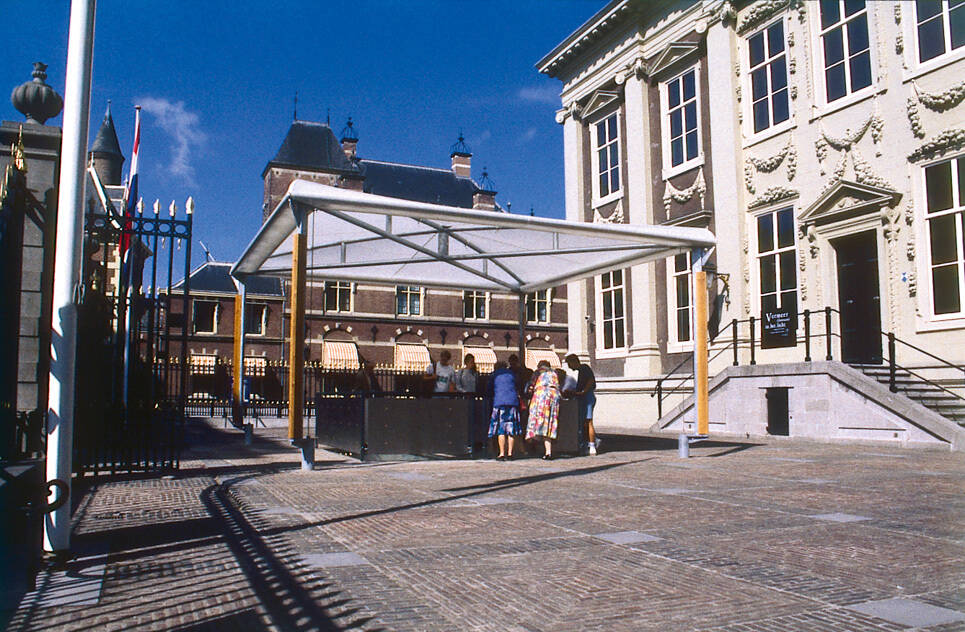
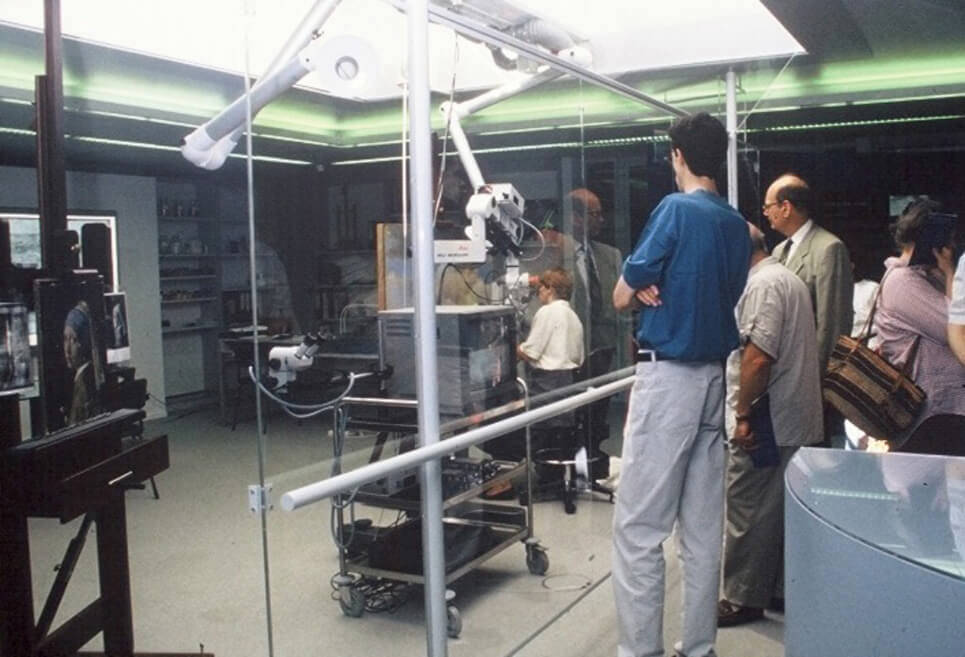
In preparation for the blockbuster Vermeer exhibition at the Mauritshuis in 1996, The Girl was restored alongside Vermeer’s View of Delft. The 1994 conservation and research project was called Vermeer Illuminated, and happened in front of the public, much like the current project. The conservators worked in a temporary studio, and visitors could watch through a glass wall, and from above through a skylight.
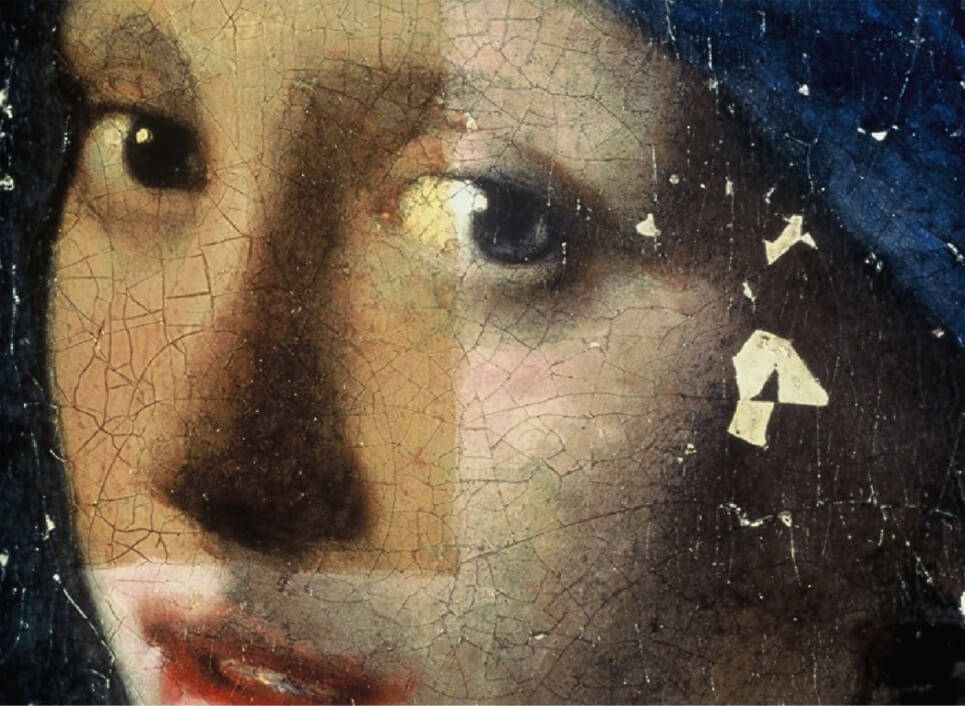
My colleagues looked different two decades ago, and so did The Girl. Before treatment, she was covered in yellow layers of varnish – including the tinted varnish that applied in the 1960s – and discoloured retouchings. During the 1994 treatment, these were carefully removed using solvents. Small losses – where paint and ground had come off centuries prior – were filled with a putty to make them level with the rest of the paint surface. After applying an isolating varnish , the damages were retouched, then the painting was given a final coat of varnish.

The materials that the conservators used in 1994 used can be easily removed in the future. They will deteriorate more slowly than those used in the past, especially as the climate, lighting and temperature in the museum are designed to be as stable as possible. Some deterioration that occurred naturally as the painting aged – like the fading of the pigments in the background (which I’ll talk about later) – are things we have to accept and that some see as almost a rite of passage: an inevitable part of the ageing process. You can read more about the conservation process in the books Preserving our Heritage, and Vermeer Illuminated.
The 1994 treatment restored the painting to its former glory, while as much as possible honouring Vermeer’s original intentions. Removing old varnish and overpaint revealed a tiny detail that had been hidden for at least a century. At the corner of her mouth, there is a highlight that Vermeer made with two dabs of pink paint. But as The Girl gained one highlight, she lost another …
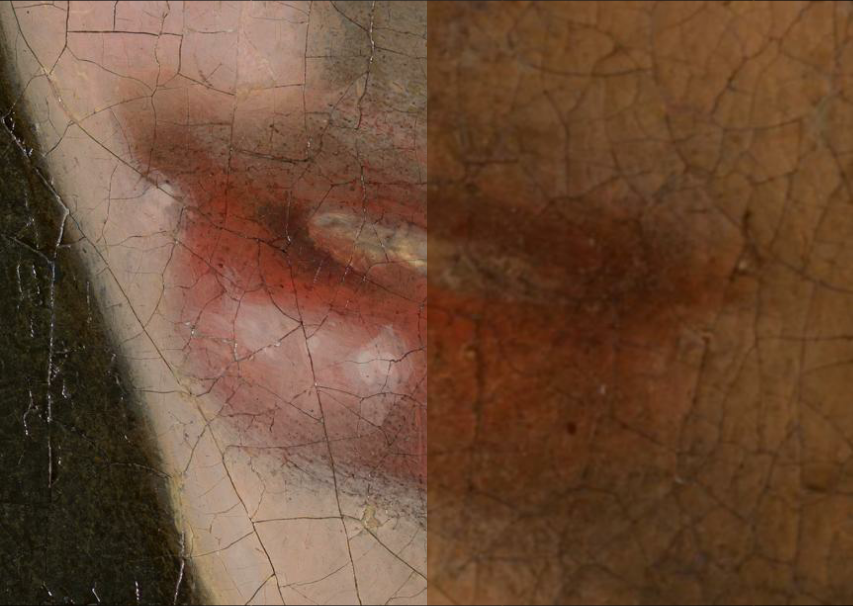
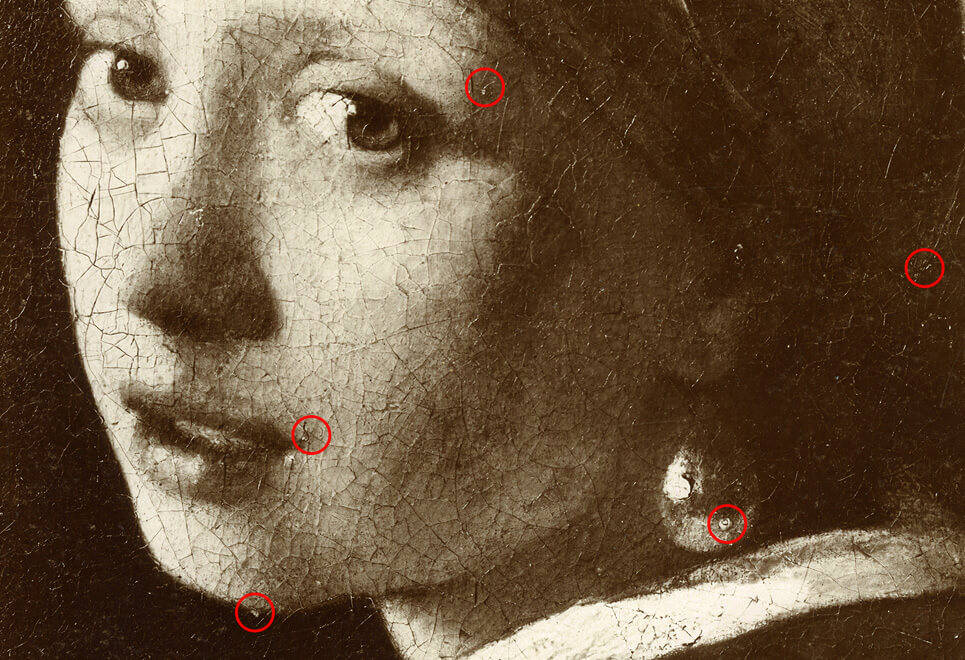
The most infamous of these dislodged fragments is the ‘second highlight’ on The Girl’s pearl earring. Until the 1994 treatment, people thought that the pearl had two bright white highlights: one large teardrop shape and higher up on the earring, and the other smaller one lower down. It turns out that the smaller one wasn’t a highlight after all.
Here’s a short video clip from the TV show Geheim van de Meester (Secret of the Master) where I explain:

The smaller ‘highlight’ was actually a fragment of paint that had accidentally become dislodged, flipped over and got stuck on the earring upside-down!
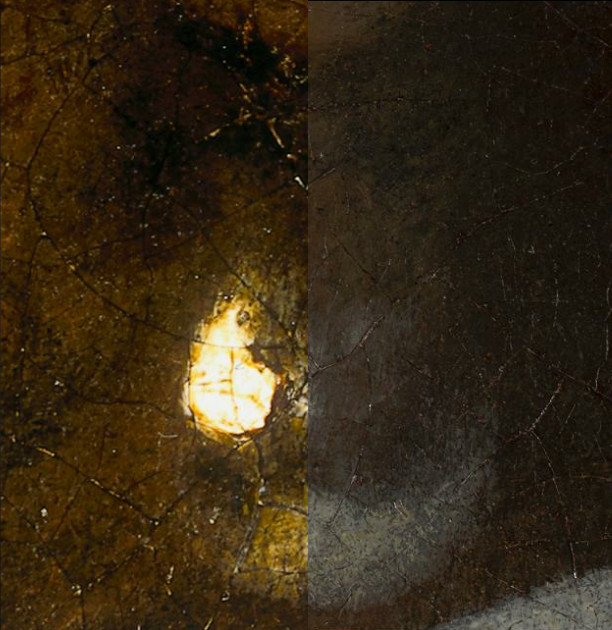
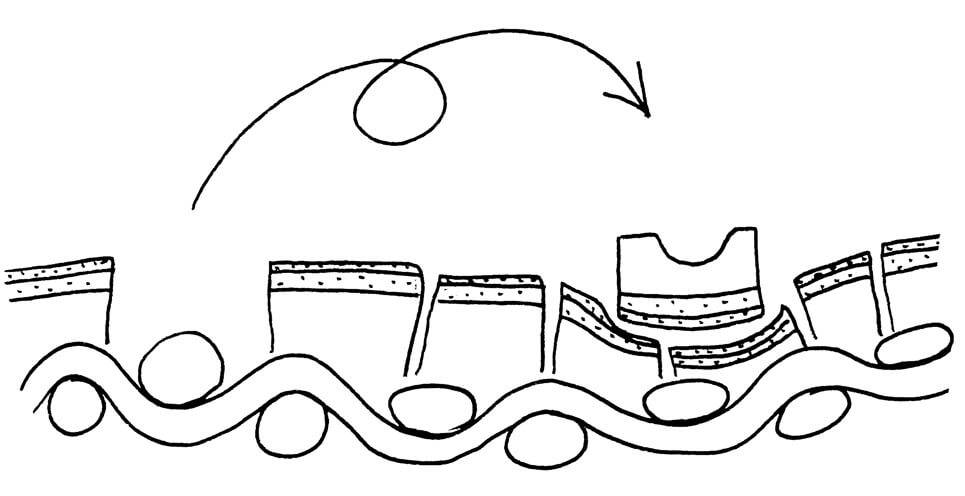
The x-ray of the painting was one clue that the ‘second highlight’ wasn’t painted like the other one. While the larger highlight shows up on the x-ray contains lead white, the smaller ‘highlight’ does not. This is one of the reasons why it’s so important to carry out a thorough technical examination as part of a conservation treatment.
Research
The displaced fragments were carefully removed during the 1994 treatment, and were used for scientific analysis. Some were embedded as cross-sections, and others were analysed to identify the pigments, oil, and old restoration materials. The fragments are still useful today: as part of the current project, we have re-analysed them using state-of-the-art analytical techniques, and have learned amazing new things, like information about their geographic origin.
The technical research that was done in the 1990s is described in an article in Vermeer Studies (1996). Now as part of The Girl in the Spotlight project, we are expanding on this knowledge by using the latest scientific analysis to re-examine the samples. We will complement this with the scientific imaging in front of the public. Tomorrow I’ll tell you about the high-tech equipment we’re using.
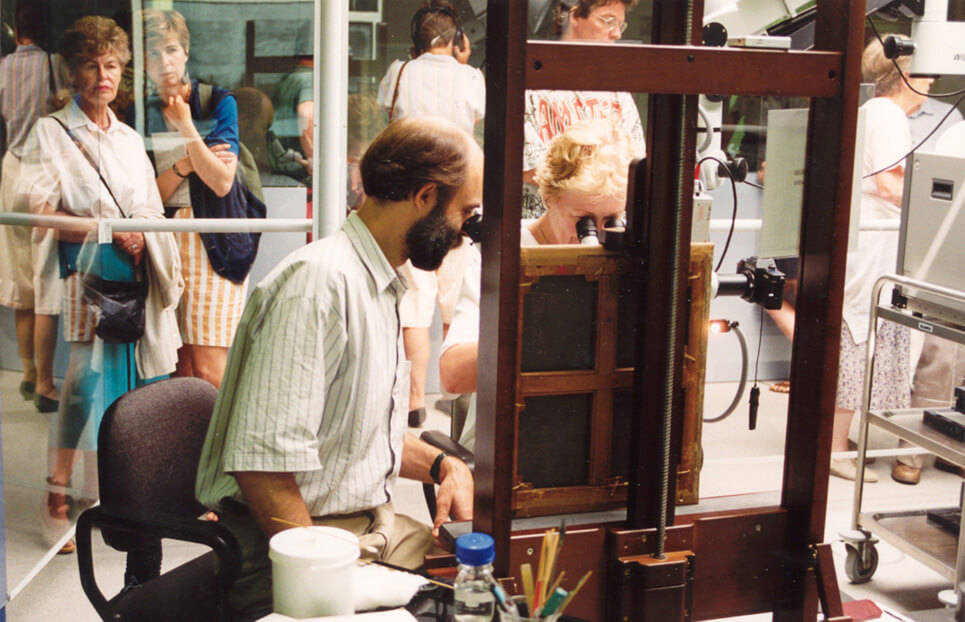
References
- Groen, Karin M., Van der Werf, Inez D., Van den Berg, Klaas Jan, Boon, Jaap ‘Scientific examination of Vermeer’s Girl with a Pearl Earring,’ In: Vermeer Studies: Studies in the History of Art, edited by Ivan Gaskell and Michiel Jonker, National Gallery of Art, Washington D.C., Yale University Press, New Haven/London, 1998. [online version]
- Noble, Petria and Epco Runia (2009) Preserving our Heritage: Conservation, Restoration and Technical Research in the Mauritshuis, Waanders.
- Wadum, Jørgen (1993) Vermeer Illuminated: Conservation, Restoration and Research, V+K Publishing/Inmerc, Naarden.
Acknowledgements
- Conservators, 1994 treatment: Jørgen Wadum and Nicola Costaras, Mauritshuis
- Scientific and technical research, 1994-96: Karin M. Groen, Inez D. van der Werf, Klaas Jan van den Berg: Netherlands Institute for Cultural Heritage (now Cultural Heritage Agency of the Netherlands (RCE))
- Scientific and technical research, 1994-96: Jaap Boon: FOM Institute for Atomic and Molecular Phyisics (AMOLF)
